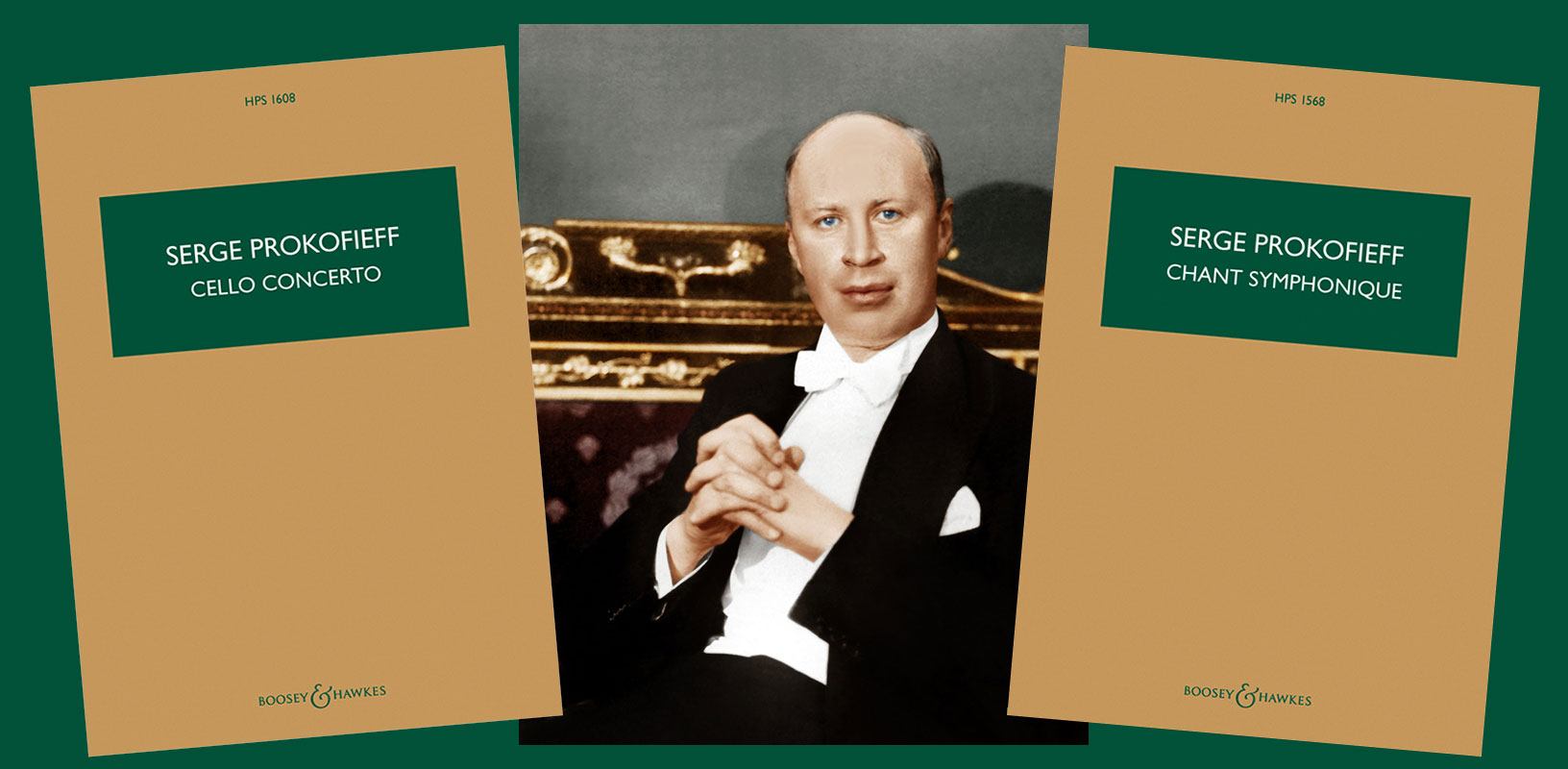New scores of Prokofieff's Cello Concerto and Chant symphonique

Two major works by Serge Prokofieff dating from the 1930s, his Cello Concerto inspired by Piatigorsky and the Chant symphonique, have joined the prestigious Hawkes Pocket Scores series.
Serge Prokofieff 's Cello Concerto and Chant symphonique appear in the Hawkes Pocket Score series for the first time, making both works available to a wider public for study in newly engraved editions. The mid-1930s were particularly fertile years for the composer, seeing him work on both these scores together with Piano Concerto No.5, Violin Concerto No.2 and Romeo and Juliet. It was also a time of international concert tours and an increasing number of months spent in Soviet Russia, paving the way for Prokofieff's permanent return to Moscow with his family in 1936.
> Buy the Cello Concerto score from our online shop
> Buy the Chant symphonique score from our online shop
Spanning the years 1933-38, the composition of the Cello Concerto in E minor, op.58 was first prompted by cellist Gregor Piatigorsky who became the muse for the work, even if Prokofieff's geographical relocation and strict Soviet rules about performers meant the premiere was finally given by the little known Lev Berezovsky in Moscow in 1938. Piatigorsky gave the US premiere in 1940 with the Boston Symphony Orchestra under Serge Koussevitzky but the composer did not assist the emigré performers interpretatively or attend the performance.
Prokofieff heard Rostropovich play the Cello Concerto in 1947, and this led him to recast the work in a wholesale rewrite as the grandiose Sinfonia Concertante. As Gerard McBurney notes in his introduction to the Cello Concerto score: "the earlier version never entirely disappeared, however, with a scattering of cellists always preferring it to the later one. And in recent years, it has found new favour and new champions, its spectacularly difficult cello writing and virtuosic orchestral effects offering a brilliance, pungency and fascination all of their own."
The Chant symphonique is one of Prokofieff’s least known orchestral works and yet one of the most exciting scores he ever wrote. The composer describes how "in 1933 I wrote a rather large orchestral piece which I called Symphonic Song, op.57. This was a serious piece of work and I took great care choosing the thematic material. In form it consists of three closely integrated movements. Although there is no programme, the mood of the three movements might be defined thus: darkness - struggle - achievement."
In his introduction to the new HPS publication, Gerard McBurney concludes that the score shows the composer experimenting with what a 'Soviet style' might mean in artistic terms, in preparation for his move back to Moscow, summing up the work as "one of Prokofieff's densest and most challenging orchestral scores. Harmonically ambiguous and polyphonically contorted, orchestrally abrasive and thematically highly compressed, it refuses to yield its secrets easily... To all intents and purposes a short one-movement symphony, it looks forward unmistakably to the 'Soviet Epic' manner of Prokofieff's Fifth Symphony of a decade later."
Other Prokofieff works published in the Hawkes Pocket Score series include Symphonies Nos.2, 3 and 4 (both versions), Piano Concertos Nos.2, 3 and 5, Violin Concertos Nos.1 and 2, Scythian Suite, Lieutenant Kijé and Peter and the Wolf. For a complete list of scores visit the Hawkes Pocket Scores area on The Shop at Boosey.com.
